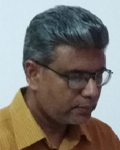Till Sun and Moon Shines [Part 9]
By Eng. Chandana JayawardanaStructural Components of Small Tank Micro Catchment.
Each tank forming a cascade has its own micro-catchment and several water related structures. Dr. P.B Dhramasena noting the land usage in both macro and micro scales, identifies micro land uses such as goda wala, iswetiya, potawetiya, gasgommana, perahana, kattakaduwa, etc. associated with small tank system. The schematic presentation of these elements illustrated in below figure.
In the cascade system, the network of canals interconnecting the tanks is equally important and several structural elements such as kuluwewa, kaliya and kiul ela have been identified. Fact that the availability of distinct vernacular terms to identify above structures itself indicates their functional differentiation and their contribution was consciously perceived by our forefathers. Their respective locations in the micro scale cascade system will provide the grounds to evaluate their contribution to the cyclicity of material flow within the system. That cyclicity should be synchronized with the macro scale natural hydrology cycle in order to ensure the sustainability of the system and succeeding chapters will be devoted to discuss the measures adopted in this phenomena.
Precipitation and Surface Run-off
The generation of precipitation in the form of rainfall could be considered as the beginning of the hydrological cycle and the principal process of water exchange from the atmosphere to the land. The rain may be intercepted by vegetation cover, detained by land surface depressions, infiltrate into the soil, or may run over land surface into water bodies.
Siltation Effects
The soil erosion accompanied with the surface runoff is a major contribution factor in tank bed siltation as well as land degradation in catchment area. The structural components associated with small tank cascade system are formed with due care to mitigate these degrading effects. In order to maintain tank geometry unaffected, silt thus accumulated should be removed and heap up in the upstream area. These soil heaps must be formed at safe gradient and stabilized with trees and grasses to prevent washing down to the tank. Among several de-silting measures possible, highly important is the stabilization of bunds with establishment of proper vegetation. In small tank micro catchment land use, gasgommana in catchment area, makes the upstream vegetation cover while kattakaduwa immediately below the tank bund, makes the downstream vegetative cover, controlling sediment flow. Dharmasena [6] notes Gasgommana is comprising of plants such as kumbuk, nabada, maila, damba, etc., and climbers such as kaila, elipaththa katukeliya, kalawel, bokalawel, etc. Perahana, the meadow developed under gasgommana, and iswtiya (or potawetiya) an upstream soil ridge constructed at either side of the tank bund also act to prevent entering eroded soil from upper land slopes to tank bed. The water hole referred to as yathuruwala minimizes bund seepage by raising the ground water table.
In small tank cascade systems, sediment transportation is addressed in another dimension also, by employing kuluvew. This is a small tank constructed above relatively large tank with sole application of trapping sediments accompanied with inflow canal and not for irrigation purpose. The canal flow is first directed to kuluwewa in order to trap the sediment flow and only the water with low sediment density is passed to the main tank.
 Eng. Chandana Jayawardana has earned his first degree in Electrical Engineering from University of Moratuwa and then, post graduate qualifications in Industrial Engineering and Buddhist Studies. He is currently working as Design Manager, Balfour Beatty Ceylon (Pvt) Ltd, Katunayake.
Eng. Chandana Jayawardana has earned his first degree in Electrical Engineering from University of Moratuwa and then, post graduate qualifications in Industrial Engineering and Buddhist Studies. He is currently working as Design Manager, Balfour Beatty Ceylon (Pvt) Ltd, Katunayake.





